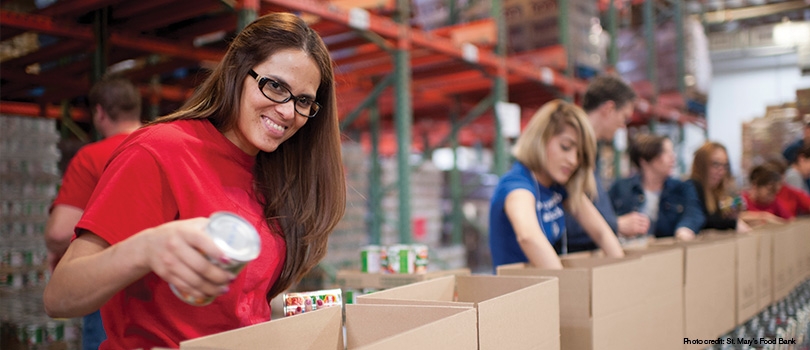Arizona Giving and Volunteering Report: additional information on methodology, sample, and limitations methodology
The Arizona Giving and Volunteering data collection was conducted by O’Neil Associates for the ASU Lodestar Center for Philanthropy and Nonprofit Innovation (formerly the ASU Center for Nonprofit Leadership and Management). A computer-assisted telephone survey, using random digit dialing, was used to obtain a representative sample of 1,004 Arizona adults. The survey was conducted from May through June, 2002, and asked about the respondent’s household giving and individual volunteering in the previous twelve months. Therefore, the unit of analysis for giving is the household; all findings refer to household giving. For volunteering, the unit of analysis is the individual, as are the attitude and opinion findings.
This methodology approximates that of the bi-annual survey done by the Independent Sector. We can therefore make some meaningful comparisons between the statewide findings and the Independent Sector’s national findings, from Giving and Volunteering in the United States, Findings from a National Survey, 2001. However, some of the differences between the national and Arizona findings may be a result of different methodology as well as the data for the Independent Sector report being collected a year earlier.
The methodology used for the Arizona Giving and Volunteering report differs considerably from that used for the Giving USA report, published by the Center for Philanthropy at Indiana University and the AAFRC Trust for Philanthropy. The Giving USA report includes foundation and corporation giving, among other significant differences.
Sample Information
The findings are based on a random sample of 1,004 adults. For results based upon the entire sample, the confidence level is 95 percent, with a margin of error of +/-3.2 percentage points. This does not apply to those findings based upon a subset of the sample, such as the demographic analyses. Also, some estimates of charitable giving are included and they are noted within the text of the report.
Limitations
This research has the general strengths and limitations of random-sample survey research. Because the questions in this study asked respondents to recall and report their charitable giving and individual volunteering over the previous year, one limitation is accuracy of recall. Also, since the data are self-reported, the findings reflect individuals’ understanding of their own charitable giving and volunteering. As noted by Earl Babbie, “Surveys cannot measure social action; they can only collect self-reports of recalled past action or of prospective or hypothetical action.”1 It is not known the degree to which over-reporting due to the social desirability of the behavior in question affects the overall results. Nor is the effect of underreporting known, although it does appear to be present in a small percentage of the data.
Note: 1. Babbie, E. The Practice of Social Research. Belmont, CA: Thompson-Wadsworth, 2004.
